Tying knots have gone from a casual interest to something approaching an obsession. The purpose of this post is to show the process for creating my latest project. A Bell Rope is a tradition among sailors and knot tyres. It is used to ring large bells on board sailing vessels.
Here are the materials. 96 feet of 1/8 inch nylon rope and about 16 feet of a thicker rope. Another 48 feet of 1/8 inch and part of a fourth package were added later. Because of my inexperience there was quite a bit of waste. You can also see some tools called fids which were made out of knitting needles and covered with decorative knots.
The first step is to cut the thicker rope into lengths and bind them together with twine to make the core. The bell rope is made of rope through and through.
The majority of the bell rope is covered with a knot, or a hitch, called a two over hitch. Strips of rope are cut about four times as long as the area to be covered.
Basically you hold the core with your thumb on top. Three strands are laid over the top of your thumb. Then, as the name implies, the left strand crosses over the other two and gets tucked under your thumb. In this picture (sorry, photography is not my forte) the strand has crossed over and is tucked under my thumb. Next the strand to the right is brought up and the new left-most strand crosses over two. In the largest diameter bottom section I estimated about 500 of these hitches. I sure there were at least 1000 in all.
Here the bottom two sections are covered. A Turks Head knot is used to cover the transition area and to decorate the Bell Rope. This is a 5 X 5 Turks Head.
"Each type of Turk's head knot is classified according to the number of leads and bights and method of construction. The number of bights is the number of crossings it makes as it goes around the circumference of the cylinder. The number of leads is the number of strands around the circumference of the cylinder, before doubling, tripling, etc." (Wikipedia - http://en.wikipedia.org/wiki/Turk's_head_knot)
Here you see the completed Turks Head. The upper two sections have been covered with two-over hitches, and the rope thimble inserted at the top. A thick piece of rope wrapped in 1/8 inch rope goes over the thimble. This piece was added after I started wrapping the core. Normally it would run (doubled) the full length of the Bell Rope.
The very bottom has to be covered. This is a spiral knot I tried first. It just wasn't going to work.
This is a 3 X 4 Turks Head laid out flat into a mat.
The long end then follows the other end around back through the pattern three times.
Then it is all tightened up.
This is a 7 X 7 Turks Head that I started with on the bottom. You can see the home made needle. It has a threaded end that is twisted onto the rope.
The mat is tucked in on the bottom. I made some mistakes while trying to secure the 7 X 7 to the bottom and ended up damaging the two-over hitches. So I took it all off and replaced it with a 9 X 9. I reused the rope in the Turks Heads at the top.
Here is the jig I use to lay out the Turks Head knots. The strands are weaved under and over going top to bottom and left to right. This was a Turks Head for a walking stick.
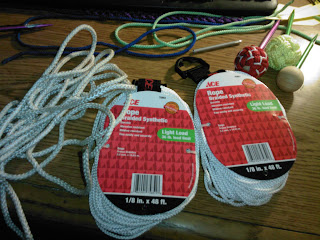
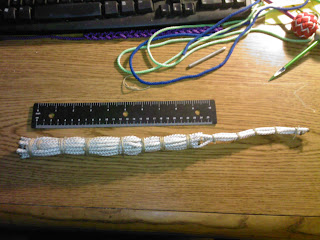

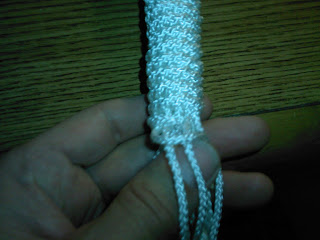


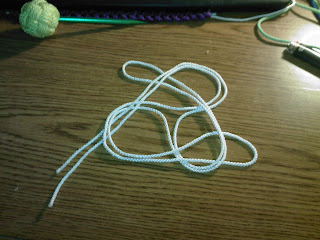
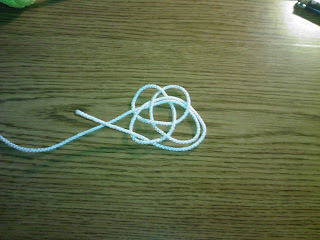
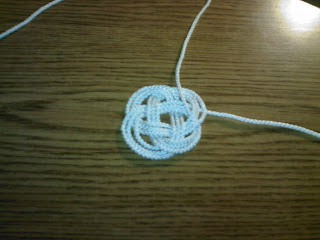

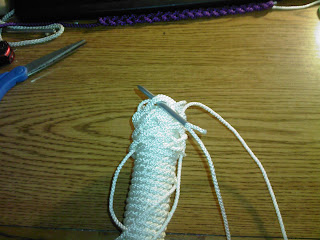

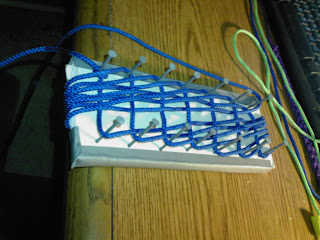
.jpg)